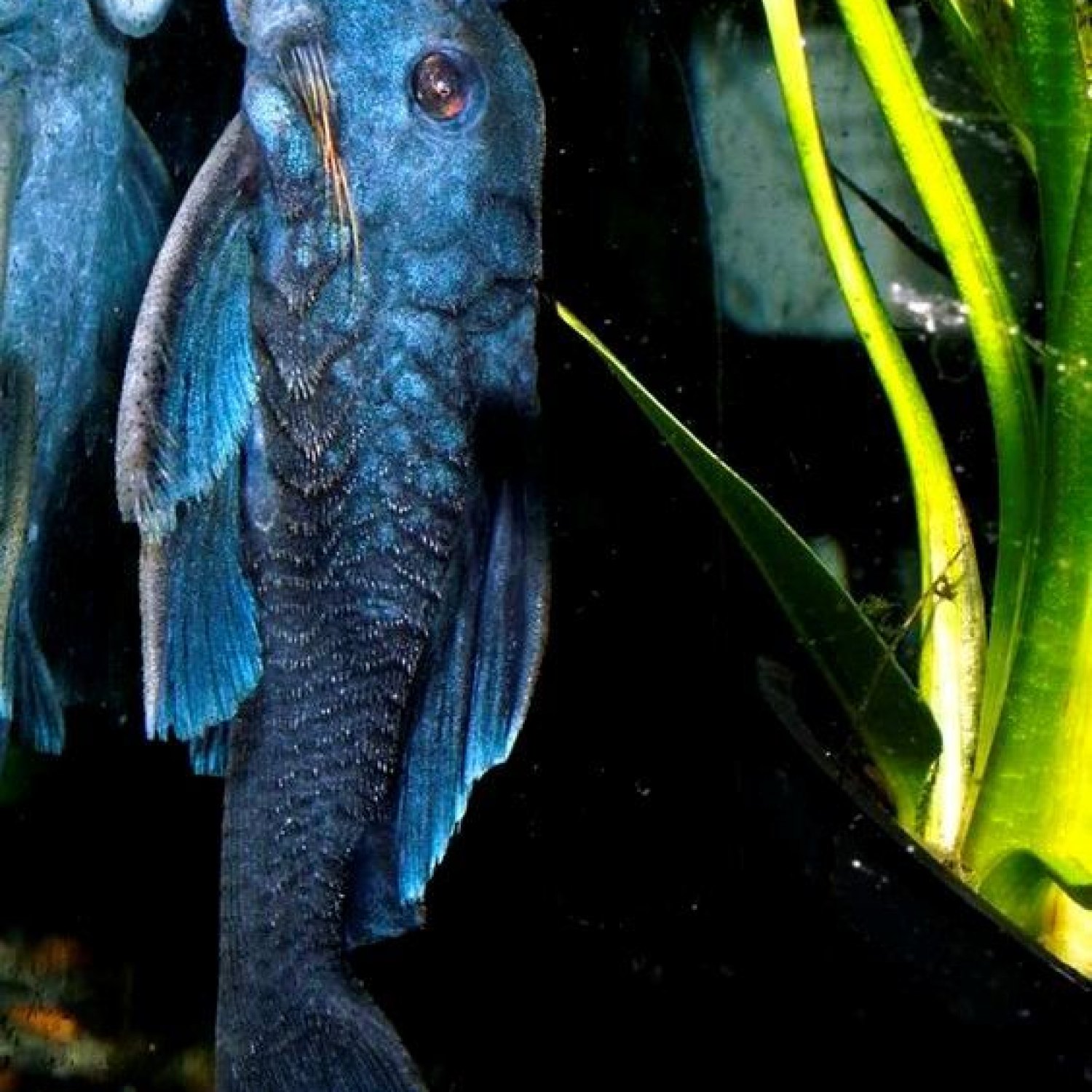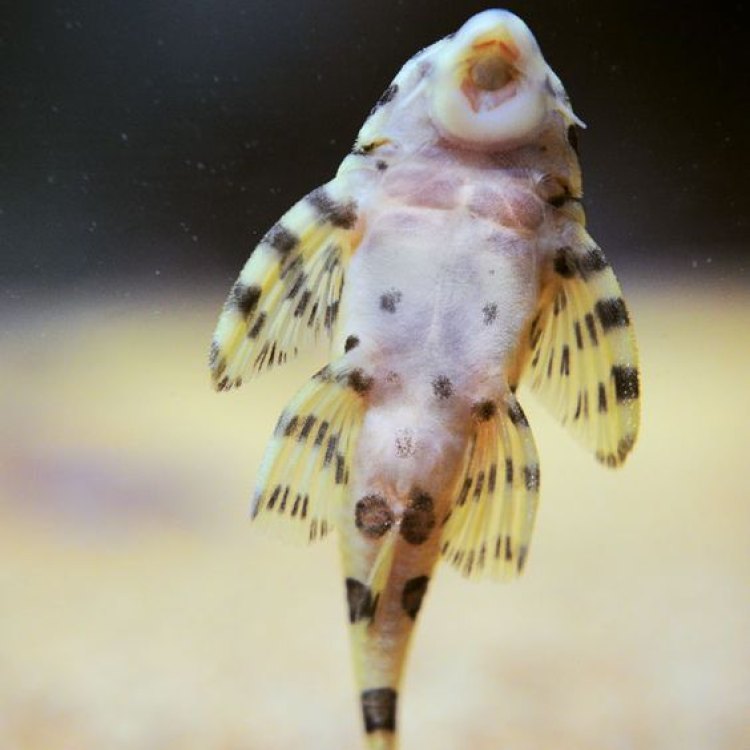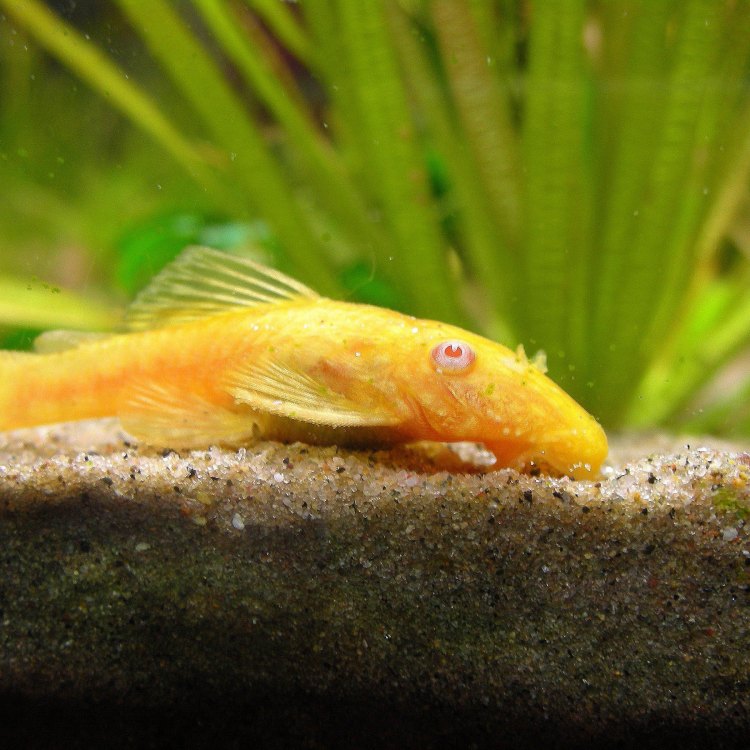
Suckerfish
Up to 1 meter (3.3 ft)
Suckerfish, also known as remora, is a unique fish species found in coastal areas and coral reefs. They can grow up to 1 meter in length and are characterized by their streamlined body shape. Belonging to the family Echeneidae, these fish have a symbiotic relationship with larger animals, attaching themselves to their hosts with a suction disk on their head. This fascinating creature plays an important role in the marine ecosystem and is a must-see for anyone interested in marine life.
Animal Details Summary:
Common Name: Suckerfish
Kingdom: Animalia
Habitat: Marine
The Fascinating World of the Suckerfish: An Ocean Parasite Like No Other
As we dive into the depths of the ocean, we come across a diverse range of marine creatures, each with unique characteristics and behaviors. Among these fascinating creatures is the suckerfish, also known as the remora remora.Found in tropical and subtropical oceans around the world, the suckerfish belongs to the animal kingdom, phylum chordata, and class actinopterygii. It is classified under the order perciformes and belongs to the echeneidae family, making it a distant relative of sharks and rays Suckerfish.
Habitat and Distribution
The suckerfish is a highly adaptable species that can thrive in a variety of marine environments. It is commonly found in coastal areas and coral reefs, where it attaches itself to larger ocean animals such as sharks, whales, and turtles.Due to its ability to attach itself to travelling sea creatures, the suckerfish has a wide geographical distribution, with populations found in the Atlantic, Pacific, and Indian Oceans, as well as the Mediterranean Sea.
Interestingly, the country of origin for this unique marine species is still unknown, as they are widespread and highly mobile, making it challenging to determine their exact place of origin.
Distinctive Features
One of the most striking features of the suckerfish is its elongated, streamlined body shape, which allows it to move effortlessly through the water while attached to a host.In terms of coloration, the suckerfish is highly variable, with shades of silver, grey, brown, and white. This diversity in coloration allows it to blend into its surroundings, making it difficult for predators to spot.
But perhaps its most distinctive feature is the modified dorsal fin, known as the sucking disc. This disc has strong suction abilities, enabling the suckerfish to attach itself to its host and hitch a ride across the ocean Scarab Beetle.
Feeding Behavior
The suckerfish has a unique feeding method that sets it apart from other marine creatures. As a parasitic species, it relies on attaching itself to a host and feeding on scraps of food from its meals.To attach itself to a host, the suckerfish will use its sucking disc, which creates a strong attachment to the skin of the host. This feeding method not only provides the suckerfish with a constant source of food but also offers it protection while travelling across the ocean.
While it may seem like a parasitic relationship, the suckerfish does not cause any harm to its host, as it only feeds on scraps and does not draw blood or cause any physical damage.
Fascinating Adaptations
The suckerfish has evolved over time to develop unique adaptations that help it survive in the ocean’s harsh environment. One of its most remarkable adaptations is its ability to change the shape of its sucking disc, allowing it to attach to hosts of varying body shapes and sizes.Moreover, the suckerfish has a strong resistance to water currents, enabling it to stay attached to its host even in strong ocean currents. This feature is essential as it allows the suckerfish to travel longer distances with its host, without fear of being swept away.
The Symbiotic Relationship
While the suckerfish may seem solely reliant on its host for survival, it is, in fact, part of a symbiotic relationship. It benefits from the host’s transportation and protection, while the host can benefit from the suckerfish’s cleaning abilities.The suckerfish will often remove parasites from its host’s skin, acting as a natural cleaning service. This mutually beneficial relationship showcases the clever adaptation of the suckerfish to survive in the ocean.
The Importance of Suckerfish in the Ocean Ecosystem
Despite being small in size, the suckerfish plays an essential role in maintaining a balanced ecosystem in the ocean. As a cleaner species, it helps keep the skin of larger ocean animals free from parasites and bacteria.Moreover, as a highly mobile species, the suckerfish acts as a means of transportation for other smaller creatures, expanding their geographical distribution and promoting genetic diversity within marine populations.
Threats and Conservation Efforts
While the suckerfish is not currently listed as an endangered species, it is still vulnerable to threats such as overfishing and habitat destruction. These threats not only affect the suckerfish directly but also impact the ocean ecosystem as a whole.Conservation efforts are focused on ensuring the sustainable use of marine resources and preserving the marine habitats where the suckerfish thrives. The implementation of marine protected areas, responsible fishing practices, and reducing plastic pollution are all essential steps in conserving this unique marine species.
The Intriguing World of the Suckerfish
In a world filled with diverse and fascinating marine creatures, the suckerfish stands out for its unique adaptations and behaviors. From its suction abilities and parasitic feeding to its important role in the ocean ecosystem, the suckerfish is a remarkable species that undoubtedly deserves more research and conservation efforts.Next time you’re snorkeling or diving, keep an eye out for this elusive creature, and you may just get a glimpse of its spectacular world.

Suckerfish
Animal Details Suckerfish - Scientific Name: Remora remora
- Category: Animals S
- Scientific Name: Remora remora
- Common Name: Suckerfish
- Kingdom: Animalia
- Phylum: Chordata
- Class: Actinopterygii
- Order: Perciformes
- Family: Echeneidae
- Habitat: Marine
- Feeding Method: Parasitic
- Geographical Distribution: Tropical and subtropical oceans
- Country of Origin: Unknown
- Location: Coastal areas and coral reefs
- Animal Coloration: Varies
- Body Shape: Streamlined
- Length: Up to 1 meter (3.3 ft)

Suckerfish
- Adult Size: Up to 1 meter (3.3 ft)
- Average Lifespan: Up to 12 years
- Reproduction: Sexual
- Reproductive Behavior: Males attach to females using specialized claspers
- Sound or Call: No
- Migration Pattern: Unknown
- Social Groups: Solitary
- Behavior: Attaches itself to larger marine animals to obtain food and protection
- Threats: Habitat destruction, overfishing
- Conservation Status: Data deficient
- Impact on Ecosystem: Can disturb host animals by attaching to them
- Human Use: None
- Distinctive Features: Flat disc-shaped head, large sucking disc
- Interesting Facts: They attach themselves to sharks, turtles, and other large animals using their sucking disc
- Predator: Various larger predatory fish

Remora remora
The Fascinating Suckerfish: A Creature That Thrives by Clinging onto Others
From the deepest depths of the ocean, emerges a creature with a unique survival strategy - the Suckerfish. This fascinating fish is known for its ability to attach itself to larger marine creatures, using its specialized suction disc to travel and feed. With its distinct disc-shaped head and solitary behavior, the Suckerfish is a creature that captures our curiosity and leaves us in awe.Size and Lifespan
The Suckerfish, also known as Remoras, can grow up to one meter (3 PeaceOfAnimals.Com.3 feet) in length and weigh up to 15 kilograms (33 pounds). These fish have an elongated body, with a flattened disc-shaped head that gives them a distinct appearance. Despite their size, Suckerfish have a relatively short lifespan, with the average being up to 12 years in the wild.
Reproduction and Reproductive Behavior
Like most marine animals, Suckerfish reproduce sexually. Males attach to females using their specialized claspers, which are modified pelvic fins that allow them to hold onto their mate during mating. These claspers are also used during their unique method of attaching to their host animals.
Behavior and Social Groups
Suckerfish are solitary creatures, meaning they prefer to live and hunt alone. However, they are often found in groups of several individuals attaching to the same host animal. These fish have a fascinating behavior where they use their suction disc to attach themselves to larger marine animals, such as sharks, turtles, and even whales Shepkita. The Suckerfish does not harm its host and instead, benefits from the relationship by obtaining food and protection.
Unique Features
The most distinctive feature of the Suckerfish is its large suction disc. This disc is located on the top of its head and is used to attach onto its host animals. Made of a strong adhesive tissue, the suction disc allows the Suckerfish to hold onto its host even during fast movements or strong ocean currents. This unique feature has given the Suckerfish its name and is essential for its survival.
Impact on Ecosystem
The Suckerfish may seem like an innocent creature, but its attachment to host animals can have significant impacts on the ecosystem. By attaching to other animals, the Suckerfish can cause harm to their host by disturbing their movements and feeding. They can also transfer parasites and diseases to their host animals, making them vulnerable to further harm. Scientists are still studying the full extent of the Suckerfish's impact on the ecosystem, and it is essential to carefully monitor their populations to maintain a balanced ecosystem.
Threats and Conservation Status
The Suckerfish faces various threats in its natural habitat, including habitat destruction and overfishing. As bottom dwellers, Suckerfish are often caught as bycatch in commercial fishing operations, leading to a decline in their population. In addition, pollution and climate change also pose a threat to these creatures, affecting their food sources and habitats. Currently, the Suckerfish is listed as data deficient on the conservation status scale, and more research needs to be done to fully understand the impact of these threats on their population.
Human Use
Despite their unique characteristics, Suckerfish are not utilized by humans in any way. These creatures are not commercially fished, and their attachment to larger animals makes it challenging to keep them in captivity. However, Suckerfish are sometimes caught and used as bait in recreational fishing, although this is not considered a significant use.
Interesting Facts
Apart from their fascinating attachment to host animals, there are many interesting facts about Suckerfish that make them stand out among other marine creatures. For one, they have a symbiotic relationship with other species, but it's not just limited to marine animals. Suckerfish have been known to attach themselves to ships and even humans who spend a lot of time in the water. Additionally, these fish have a voracious appetite and will feed on scraps of food from their host's meals. They are also incredibly resilient creatures, with the ability to survive for short periods outside of water by retaining water in their gills.
Predators and Migration Patterns
Suckerfish have a few natural predators, including larger predatory fish such as tuna and swordfish. However, their ability to attach themselves to larger and faster animals gives them an advantage in escaping from potential predators. Their migration patterns are still unknown, as they tend to move with their host animals, making it difficult to track their movements.
The Enigmatic Suckerfish
The Suckerfish is undoubtedly an enigmatic creature with a unique survival strategy that has fascinated scientists and ocean enthusiasts alike. Although there is still much to learn about these creatures, their ability to cling onto larger animals and thrive in the vast ocean is truly remarkable. As our understanding of the Suckerfish grows, it is crucial to balance conservation efforts to ensure the sustainability of their populations and the delicate marine ecosystems they are a part of. So, the next time you spot a Suckerfish attached to a shark or a turtle, take a moment to appreciate this extraordinary creature and its remarkable survival tactics.

The Fascinating World of the Suckerfish: An Ocean Parasite Like No Other
Disclaimer: The content provided is for informational purposes only. We cannot guarantee the accuracy of the information on this page 100%. All information provided here may change without prior notice.












